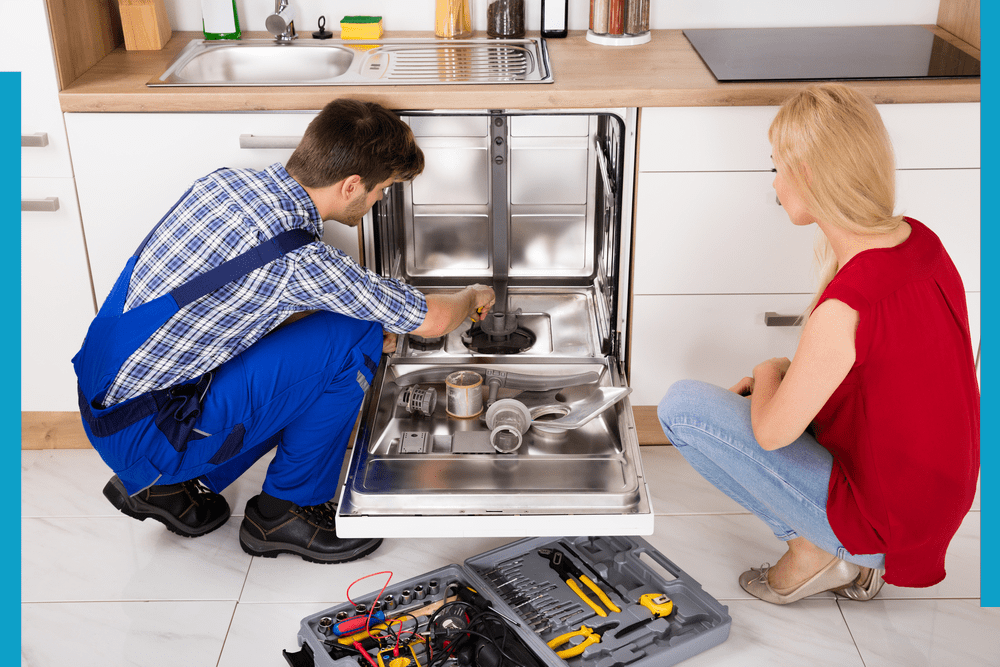1. Air gap / Drain hoses
If there is an air gap (located in the sink, near the faucet), check to see if it is clogged. Unscrew the top cap and see if there is anything blocking inside. Note: If there is no air gap installed, the dishwasher might not drain properly.
If the drain hose is clogged, the dishwasher would not drain. If there is an air gap installed, it is very common that a hose going from the air gap into the garbage disposer is clogged. Remove and clean the hose. Make sure to reattach the hose before starting the dishwasher.
Note: If you recently had a garbage disposer installed, it is common to overlook removing the drain plug.
2. Broken belt
Some dishwasher models use a belt to drive the pump. Replace the belt if found broken.
Note: Sometimes the belt would just come off the pump. Even though it might not be broken, it is recommended that you replace the belt, because it is probably too stretched out.
3. Pump
Some models have two impellers inside the pump – one, wash impeller, takes care of the wash cycles, the other, drain impeller, drains the water out. If the drain impeller is broken (broken blades, shaft), the dishwasher would not drain. Replace any broken pump components.
4. Drain solenoid
Some models (for example most GE dishwashers) use a drain solenoid to drain water out. Sometimes the solenoid gets stuck, preventing the water from draining out. Try to free up the solenoid. If unsuccessful, you might have to replace the pump assembly.
5. Motor
If the motor is stuck, it is sometimes possible to free it up by manually spinning the motor.
Replace the motor if defective.
6. Timer
Replace if defective (note: uncommon problem).


